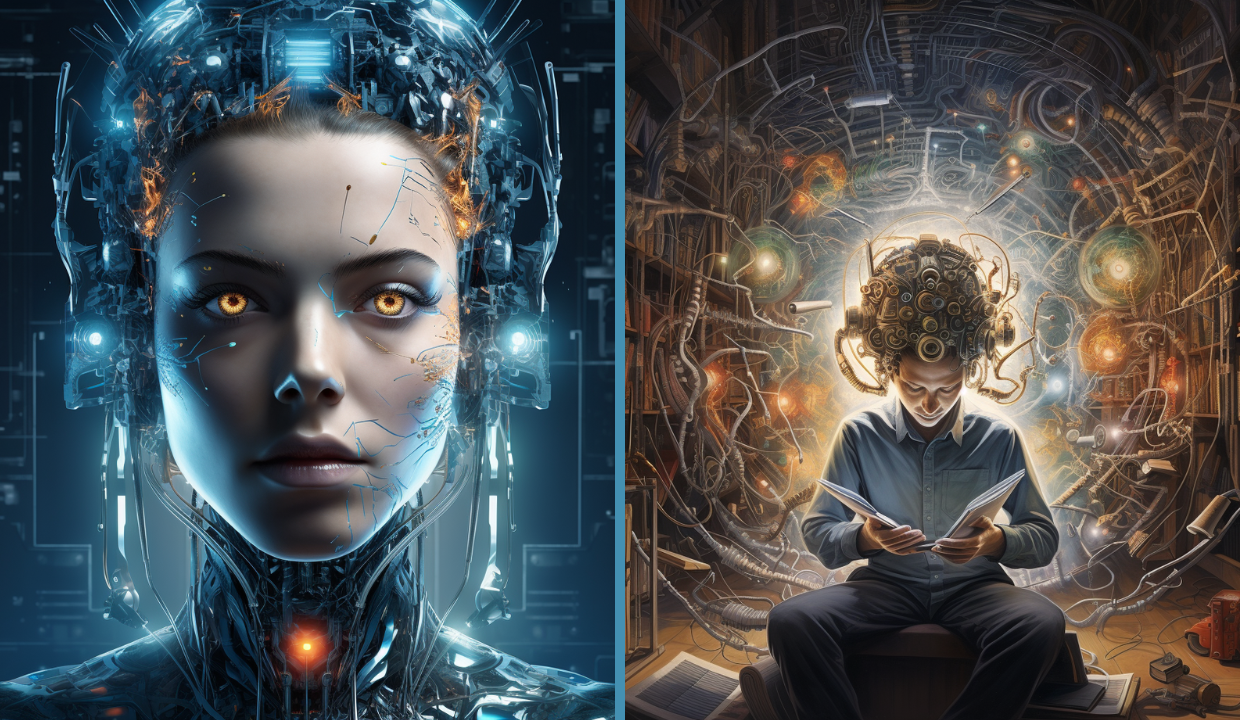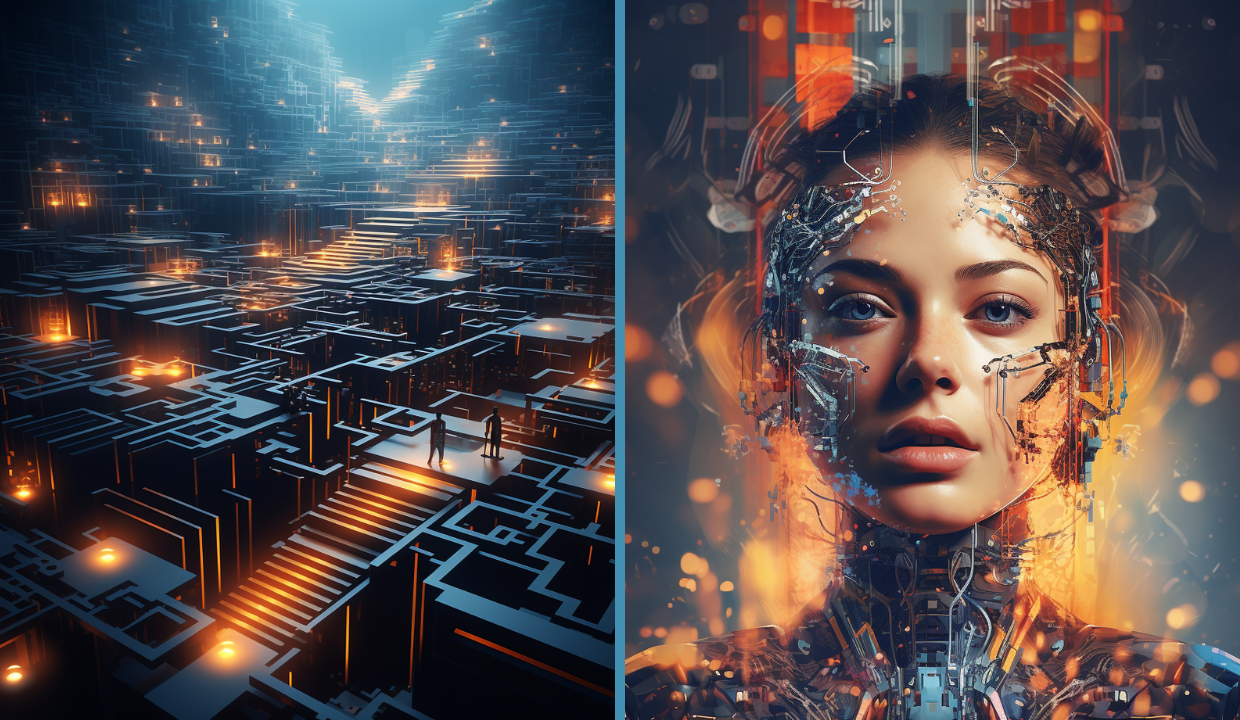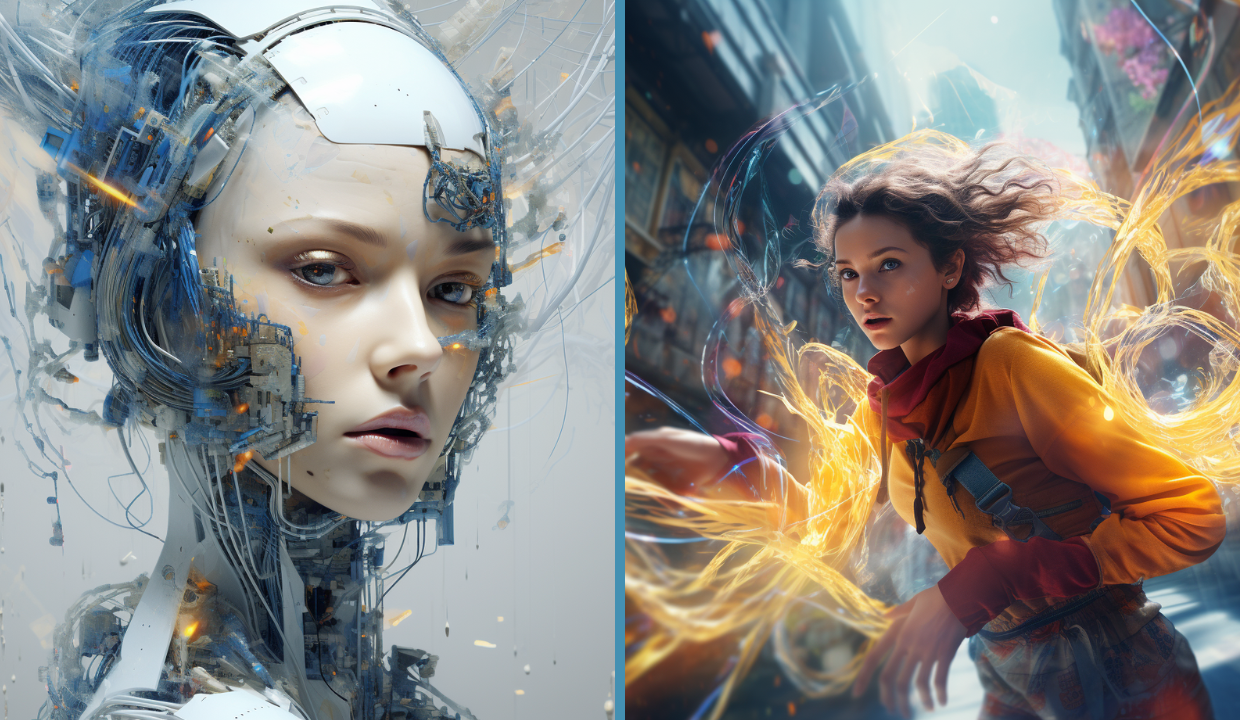Intro
Are you looking for a game-changing technology that will revolutionize the way you do business? Look no further than Generative AI! This revolutionary technology uses machine learning algorithms to generate new ideas, data, and insights that can be used to make decisions and drive business growth.
Generative AI can help you gain a competitive edge by automating mundane tasks and making complex decisions quickly and accurately. It can also help you uncover hidden insights and uncover patterns in data that would have been impossible to find manually. Plus, it can help you generate new ideas and products that can be used to increase revenue and drive innovation.
This article will provide an in-depth look at how Generative AI works, its potential applications, and the benefits it can bring to your business. We'll discuss the various types of Generative AI, the tools available, and how to get started using this technology. Plus, we'll explore some of the most exciting use cases for Generative AI and how it can help you unlock new opportunities. Get ready to be blown away by the power of Generative AI – the future of business is here!
How We Choose
Generative AI is revolutionizing the way we create content. From automating mundane tasks to crafting unique works of art, generative AI is transforming the way we interact with technology.
Our team of experts has researched and tested all the latest generative AI tools available on the market so you can easily find and purchase the perfect tool for your needs. We've done all the hard work so that you can quickly start creating amazing content with just a few clicks!
Say goodbye to tedious tasks and hello to creative possibilities with generative AI - explore our reviews today and unlock your creative potential!

1. How to Evaluate Generative Models
Why We Love It:
Evaluating generative AI models can be tricky, but it doesn't have to be a daunting task. With the right tools and techniques, you can quickly assess the quality of a generative AI model and determine if it's suited to your needs. Quality is a key requirement for successful generative AI models. By measuring the accuracy of the model's predictions and assessing the fidelity of the generated output, you can get a good indication of the model's overall performance.
What You Should Know:
In addition to quality, diversity, and speed are also important considerations when evaluating generative AI models. Diversity ensures that the model can generate multiple variations of a single output, while speed helps to determine how quickly the model can generate results. To get the most out of your generative AI model, you should also consider the model's capability to generate data with a wide variety of parameters. With the right evaluation techniques, you can easily assess the quality, diversity, and speed of your generative AI model to ensure it meets your needs.

2. Steps to Create Generative AI Models.
Why We Love It:
Creating generative AI models is an exciting way to teach machines to recognize and generate complex data. With the help of diffusion models, we can determine vectors in latent space through a two-step process during training. This process helps to improve the accuracy and quality of the generated data significantly. Moreover, the forward diffusion process slowly adds random noise to training data, while the reverse process reverses the noise to reconstruct the data samples. This allows the model to learn more complex patterns and generate more realistic data.
What You Should Know:
Generative AI models can be used for a variety of tasks such as image generation, natural language processing, and more. With diffusion models, it's much easier to create models that can generate high-quality data from simple input. Additionally, these models can learn from limited training data, making them ideal for applications where there is a relatively small amount of available data. So why wait? Start creating generative AI models today and experience the power of diffusion models!

3. Examples of Generative AI in Action
Why We Love It:
Generative AI is an exciting new technology that is revolutionizing the way language, visual and audio tasks are being performed. We love it because it is allowing us to leverage large language models for a wide variety of tasks, from text generation to natural language processing and translation. Audio tasks, such as music, audio, and speech are also emerging fields in which generative AI is playing an important role.
What You Should Know:
Generative AI is also being used to generate synthetic data, which is becoming an increasingly important tool for overcoming the data challenges faced by many enterprises. Generative AI models are even being used to create realistic-looking images and videos, as well as synthesize audio and speech. Generative AI is definitely here to stay, and it’s only going to become more important and more prevalent in the years to come.

4. Popular Applications
Why We Love It:
Generative AI has the potential to revolutionize the fields of transportation, natural sciences, and entertainment, and is expected to have a significant impact on the automotive industry. This cutting-edge technology can help create 3D worlds and models for simulations and car development, as well as develop new protein sequences to aid in drug discovery. From video games to film, animation, world-building, and virtual reality, generative AI is set to transform all aspects of the entertainment industry.
What You Should Know:
Generative AI is a powerful tool, but it is also important to consider the ethical implications that come with using such advanced technology. With this in mind, it is important to use it responsibly and to ensure that it is used in a way that is beneficial to society. Additionally, it is important to stay up to date on the latest developments in generative AI so that you can take full advantage of its capabilities.

5. What are the Challenges of Generative AI?
Why We Love It:
Generative AI is incredibly powerful and offers a range of potential applications. From more realistic graphics in video games, to personalized product recommendations and interactive chatbots, the possibilities are endless. Generative models are also able to generate complex 3D assets and animations quickly and efficiently, making them valuable for use in the gaming and film industries.
What You Should Know:
Generative AI does come with its own challenges. Significant capital investment, technical expertise, and large-scale compute are all required to develop and deploy such models. Additionally, due to the scale of generative models, there may be latency present in the time it takes to generate an instance. In many industries, few 3D assets exist and they’re expensive to develop. Such areas will require significant resources to evolve and mature. Businesses may also struggle to get a commercial license to use existing datasets or to build bespoke datasets to train generative models. However, with the right resources and expertise, generative AI can open up a whole new world of possibilities.

6. Benefits of Generative AI
Why We Love It:
Generative AI is an amazing technology that has the potential to revolutionize the way we create and interact with content. With generative AI algorithms, we can create content that is indistinguishable from content created by humans. This can be used for applications such as entertainment, advertising, and creative arts, allowing us to create content that is both unique and engaging.
What You Should Know:
Generative AI is not just about creating content, however. It can also be used to explore and analyze complex data in new ways, allowing businesses and researchers to uncover hidden patterns and trends that may not be apparent from the raw data alone. Generative AI can also help automate tasks such as natural language processing, making it easier for businesses to process large amounts of data quickly and accurately. With generative AI, the possibilities are truly endless!

FAQs
1. What is generative AI technology?
Generative artificial intelligence or generative AI is a type of artificial intelligence (AI) system capable of generating text, images, or other media in response to prompts. Generative AI models learn the patterns and structure of their input training data, and then generate new data that has similar characteristics.
2. What is generative AI vs AI
Different algorithms – generative AI uses complex algorithms and deep learning to generate new content based on the data it is trained on. Predictive AI generally relies on statistical algorithms and machine learning to analyze data and make predictions
3. What is generative AI in healthcare?
“Generative AI is currently being used to develop personalised treatment plans by analysing patients' medical history, symptoms and other types of data to identify patterns and trends. This information can then be used to develop a treatment plan that is tailored to individuals' patient needs
4. What is an example of a generative AI model?
Generative AI can produce outputs in the same medium in which it is prompted (e.g., text-to-text) or in a different medium from the given prompt (e.g., text-to-image or image-to-video). Popular examples of generative AI include ChatGPT, Bard, DALL-E, Midjourney, and DeepMind
5. What is generative AI for dummies?
Generative AI is a subfield of AI that involves creating algorithms that can generate new data such as images, text, code, and music. The big difference between generative AI and “traditional AI” is that the former generates new data based on the training data.
6. What are the two types of generative AI?
So far, there are two prominent frameworks of generative AI: Generative Adversarial Network (GAN) and Generative Pre-trained Transformer (GPT)
7. Why is generative AI so popular?
These technologies will significantly boost productivity and allow us to explore new creative frontiers, solve complex problems, and drive innovation. Ultimately, generative AI will fundamentally transform the way information is accessed, content is created, customer needs are served and businesses are run.
8. What companies are using generative AI?
Major companies like Alphabet, Apple, Microsoft, and Nvidia, among many others, are already drooling over the countless applications of generative AI.
9. How does generative AI work?
The main idea is to generate completely original artifacts that would look like the real deal. Generative AI that draws pictures from word prompts be like… Jokes aside, generative AI allows computers to abstract the underlying patterns related to the input data so that the model can generate or output new content.
10. Who is the leader in generative AI?
Microsoft is one of the most dynamic leaders in generative AI today, developing many of its own generative AI tools while supporting and funding new technologies from OpenAI.
Conclusion
Generative AI is an exciting and rapidly evolving technology that offers immense potential for businesses. The six products we’ve reviewed here are just a few examples of the many tools available for creating AI models and unlocking their potential.
No matter what type of project you’re working on, there’s a generative AI tool out there that can help you achieve your goals. So take the time to explore the options available and find the one that’s right for you. With the right tool in hand, you’ll be able to unlock the power of generative AI and create amazing applications and experiences!
Your Friend,
Wade





